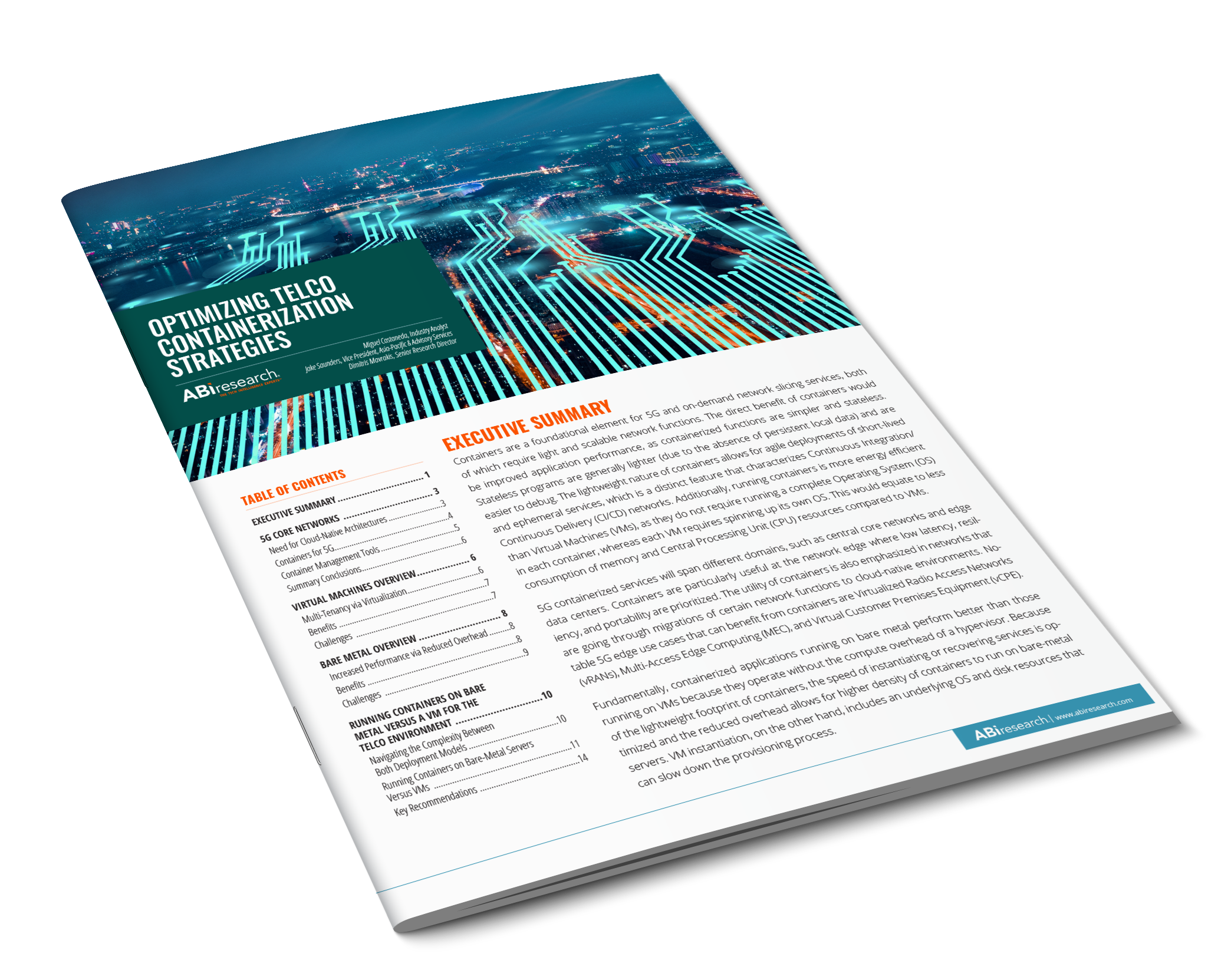Containers are a foundational element for 5G and on-demand network slicing services, both of which require light and scalable network functions. The direct benefit of containers would be improved application performance, as containerized functions are simpler and stateless.
Stateless programs are generally lighter (due to the absence of persistent local data) and are easier to debug. The lightweight nature of containers allows for agile deployments of short-lived and ephemeral services, which is a distinct feature that characterizes Continuous Integration/Continuous Delivery (CI/CD) networks. Additionally, running containers is more energy efficient than Virtual Machines (VMs), as they do not require running a complete Operating System (OS) in each container, whereas each VM requires spinning up its own OS. This would equate to less consumption of memory and Central Processing Unit (CPU) resources compared to VMs.
This whitepaper explores containerized strategies and:
- The need for cloud-native architectures
- Containers for 5G
- Container management tools
- The benefits and challenges of multi-tenancy via virtualization
- Bare metal benefits and challenges


